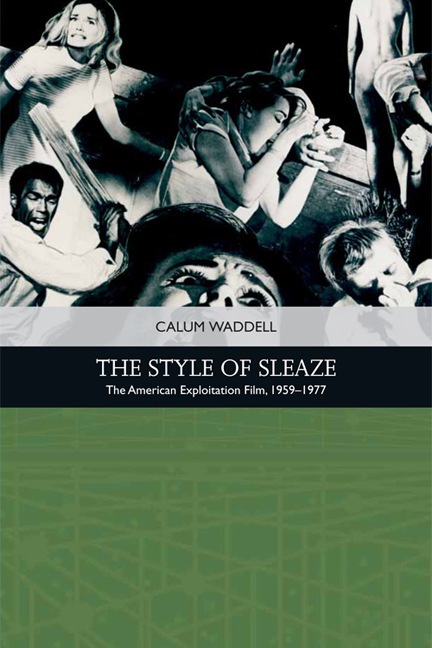Book contents
- Frontmatter
- Contents
- List of Figures
- Acknowledgements
- Introduction
- 1 Not Quite Hollywood
- 2 Emerging from Another Era – Narrative and Style in Modern Exploitation Cinema
- 3 Can We Call It Sexploitation?
- 4 Sex Morality Plays: Character in Adult Cinema
- 5 The Body is Everything: Sexploitation Spectacle
- 6 Exploitation-Horror Cinema
- 7 Cannibalising Tradition: Romero’s Zombies and a Blood Feast
- 8 Slash and Burn: The Exploitation-Horror Film in Transition
- 9 Blaxploitation Cinema: Race and Rebellion
- 10 Sex, Violence and Urban Escape: Blaxploitation Tropes and Tales
- 11 The Blaxploitation Female
- 12 Exploitation as a Movement
- Select Bibliography
- Index
9 - Blaxploitation Cinema: Race and Rebellion
Published online by Cambridge University Press: 11 November 2020
- Frontmatter
- Contents
- List of Figures
- Acknowledgements
- Introduction
- 1 Not Quite Hollywood
- 2 Emerging from Another Era – Narrative and Style in Modern Exploitation Cinema
- 3 Can We Call It Sexploitation?
- 4 Sex Morality Plays: Character in Adult Cinema
- 5 The Body is Everything: Sexploitation Spectacle
- 6 Exploitation-Horror Cinema
- 7 Cannibalising Tradition: Romero’s Zombies and a Blood Feast
- 8 Slash and Burn: The Exploitation-Horror Film in Transition
- 9 Blaxploitation Cinema: Race and Rebellion
- 10 Sex, Violence and Urban Escape: Blaxploitation Tropes and Tales
- 11 The Blaxploitation Female
- 12 Exploitation as a Movement
- Select Bibliography
- Index
Summary
Blaxploitation may seem like a very self-explanatory term: it was Richard Roundtree as John Shaft and African-American actors firing weapons, talking ‘street’ lingo, seducing beautiful women and acting ‘badass’. Indeed, Koven offers the (seemingly) clearest of definitions – ‘Blaxploitation films are, by definition, “black exploitation” films.’ However, if we have come to realise that exploitation may refer to something more than just a vague sense of ‘excess’, then can we also perhaps identify a ‘blaxploitation’ style and a number of key films? Furthermore, may this style indicate something more than a trend in movies that shared something more than just the race of the leading actors and actresses? In addition, could that style fit into what this book has, so far, identified as the ‘exploitation movement’? My answer to all of these questions is yes – predominantly because the key blaxploitation films share more stylistic similarity with the concurrent sexploitation and exploitation-horror productions than they do so-called big studio ‘black’ movies such as the Shaft series.
Consequently, while the term blaxploitation has been widely discussed within the Academy as a reference to ‘the formulaic cycle of black-centred action films produced in the early to mid-1970s’, there is more groundwork to be done. Indeed, such blanket categorisation fails to comprehend the amount of divergent titles that found themselves typified as ‘blaxploitation’. Moreover, what began as ‘blaxploitation’ is certainly not – at least in terms of style – how the genre concluded. By the time of late-in-the-day films such as J.D.'s Revenge (Arthur Marks, 1976) and Black Samurai (Al Adamson, 1977), the genre had metamorphosed into something very different – the former introduces supernatural horror elements and the latter is indebted to Japanese swordplay cinema. As such, any stylistic link that these films have to such genre trendsetters as Sweet Sweetback's Baadasssss Song (Melvin Van Peebles, 1971) and Super Fly (Gordon Parks, Jr, 1972) is identifiably minimal – they do not look the same and they certainly do not share a similar thematic. Most recently, Fisher admits that a generally unheralded cycle of ‘blaxploitation western’ be given more scrutiny – even while Koven, a contemporary documenter of the form, insists that these are ‘not blaxploitation films’.
- Type
- Chapter
- Information
- The Style of SleazeThe American Exploitation Film, 1959–</I>1977, pp. 140 - 156Publisher: Edinburgh University PressPrint publication year: 2018



